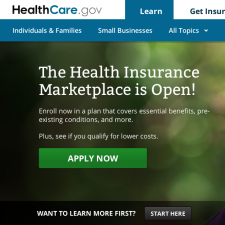

And speaking of ObamaCare, October 1st was also the day that individuals across the country could go online and start signing up for health insurance coverage on the state-based exchanges. The early feedback is that the websites–including both the state exchanges and the main portal healthcare.gov–experienced some pretty serious glitches. The federal government claims that the site functions just fine, but was simply overwhelmed by “up to five times as many users as it was designed to handle.” Critics, of course, contend that this is merely the latest evidence of the failures of a terrible policy. Just watch this piece from Fox News.
The truth is, the task being demanded of the exchanges is actually a terribly complex series of tasks that have to be carried out essentially in real time. That, when combined with a tremendous amount of volume, was–at times–enough to overwhelm the systems the government had put in place. But it is far too soon to make a judgment about the exchanges. Of the more than 8 million people who visited healthcare.gov the week of October 1st, we don’t know yet how many actually signed up for coverage and how many were just curious individuals–including reporters, academics, and others who have no intention of enrolling in a plan.
What we do know is that the options available to people through the exchanges vary widely. And that is actually really good news. Why? Because for the first time in quite a long time, if not ever, insurance companies are having to go head-to-head publicly with each other. This is a grand experiment in whether the free market can work for health insurance.
It will be some time before we ought to make much ado about the performance of the exchanges. I think that some wrinkles were certainly to be expected, but the federal government is not shying away from the glitches. They are openly admitting that they are not satisfied with the initial roll out, and they are acting quickly to resolve the problem. Meanwhile, there is at least some indication that millions of people are interested in what the exchanges have to offer: affordable health insurance options. People still have nearly six months to get signed up for a plan before facing a penalty. That should be plenty of time for the kinks to get worked out and for people to get signed up. So, let’s take a collective breath and revisit this question of evaluating the exchanges in March 2014. It will be much clearer by then whether the grand experiment has succeeded or failed.